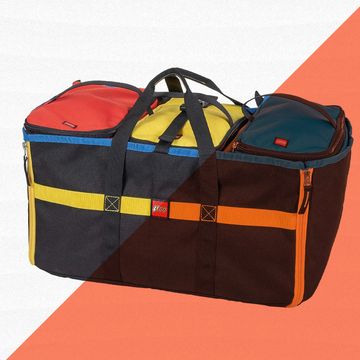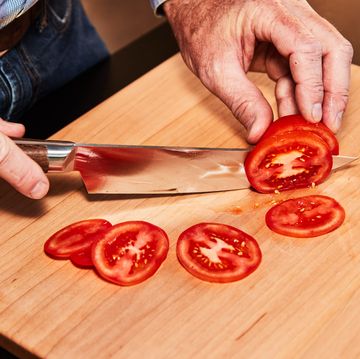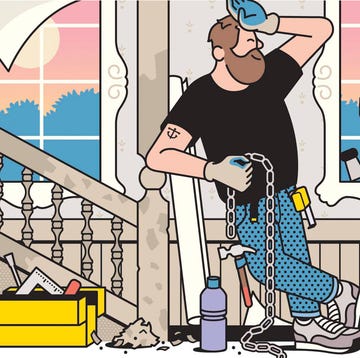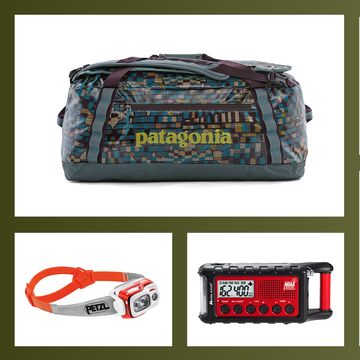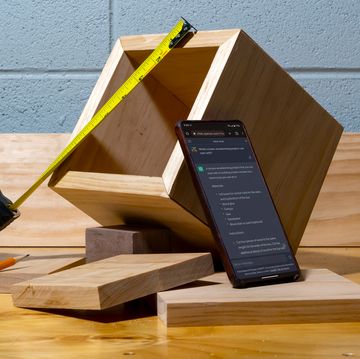The key to this project is a sturdy design that's fast and simple to build. We were disappointed by our first few attempts to fasten the footrest. A 1/16-inch heavy steel bracket bent the moment we put any weight on it. Bolts and screws were stronger, but they either gave off disturbing creaking noises or loosened as we walked on them. It wasn't until we got to the current design, which has no through holes to drill or angled support brackets to cut, that we were satisfied with the footrests.
In terms of height, our first try was only 6 inches off the ground. We wanted to get stability and build under control before we worried about height. After that, we went up to 12 inches. Depending on the height of the child, you could go somewhat higher than that, but for safety, it's best not to go any higher than the child's knee. He'll need to step up to it without help, after all.
We wondered if we would need some sort of tread on the bottom of the stilts, but after walking a slick garage floor, a concrete sidewalk, and a lawn, we found that traction was not a problem. After only a few minutes of wear, the feet of the stilts roughened up enough to provide grip on most surfaces.
One issue we didn't expect was splinters. Construction lumber has to be carefully sanded where the stilt user puts his or her hands and where the body of the stilts rubs against the person's arms. Fortunately, a random orbital sander or even just hand sanding quickly takes care of the problem. While you're at it, knock off any sharp corners on the footrests or support blocks.
We had a 180-pound man walk around on these, so they should be more than capable of handling most children.
Materials Cut List
A) 2 2" x 3" x 5' stilts
B) 4 2" x 3" x 9" side supports
C) 2 2" x 3" x 11" footrests
D) 2 2" x 3" x 1' bottom supports
Tools
Miter saw or circular saw
Cordless drill
Square
1/8" x 6" drill bit
Sander
Shopping List
3 2" x 3" x 8' studs
1 Box No. 10 x 3" Spax construction screws
8 ¼" x 5" Spax hex-head lag screws
80-grit sandpaper
120-grit sandpaper
Instructions
1. Crosscut two 2 x 3s to the dimensions shown in our cut list [A, B, C, D].
2. Determine how high up you want the bottom support block to be. (We recommend anywhere from 12 to 18 inches, depending on the height, enthusiasm, and agility of the kid.) Then mark a reference line across the main stilt [A] and secure the bottom support block [D] below the line with two 3-inch construction screws.
3. Center the footrest [C] on the bottom support block so that there's equal overhang on both ends. Secure it with two 3-inch construction screws driven through the footrest and into the bottom support block [D].
4. Flip the stilt over and position the side support blocks [B] against it, centered on the footrest. Drive one 3-inch construction screw through the center of each support block and into the footrest.
5. Turn the stilt on its side and use a 6-inch-long, ¹⁄8-inch-diameter drill bit to make a pair of pilot holes through the side support blocks [B] and into the body of the stilt [A]. Drive a ¼ x 5–inch lag screw into each pilot hole.
6. With a sander (or a square of sandpaper), use 80-grit followed by 120-grit to carefully sand the stilts where the user's hands will grip. If there are any sharp corners on the tops of the support blocks or footrests, reduce them with the 80-grit paper.

Roy Berendsohn has worked for more than 25 years at Popular Mechanics, where he has written on carpentry, masonry, painting, plumbing, electrical, woodworking, blacksmithing, welding, lawn care, chainsaw use, and outdoor power equipment. When he’s not working on his own house, he volunteers with Sovereign Grace Church doing home repair for families in rural, suburban and urban locations throughout central and southern New Jersey.





